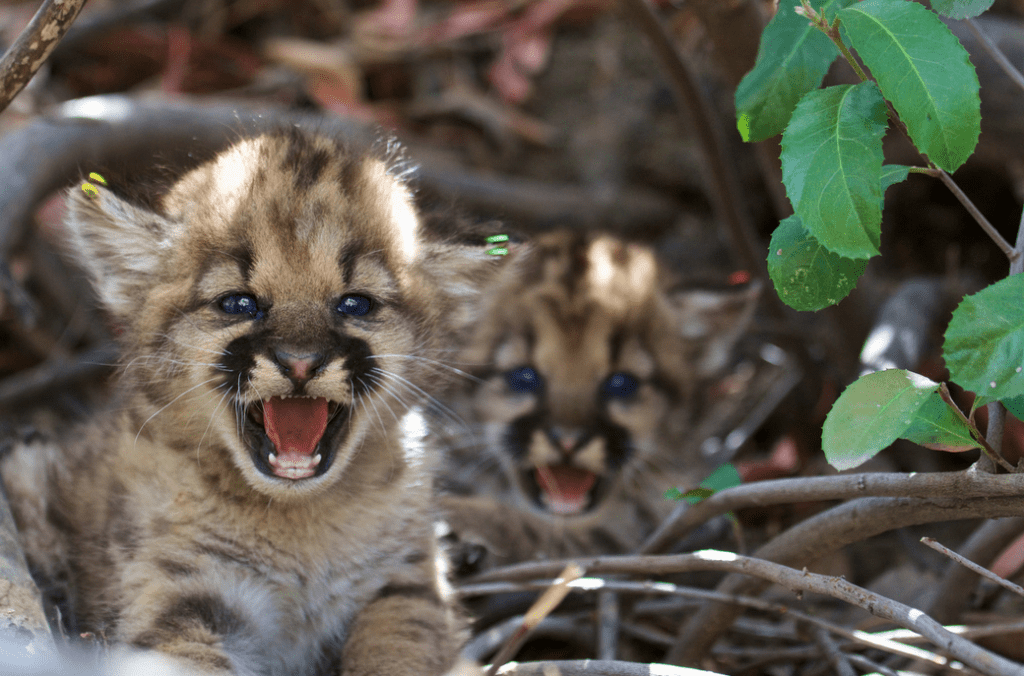The discovery of two new litters of mountain lion kittens in Southern California’s Santa Susana Mountains has scientists hopeful that they will grow into healthy adults and help sustain the population as a whole.

Southern California is riddled with highways and suburban development, relegating mountain lions to small regions of habitat. Given these small areas that they call home, the survival of newborn mountain lions into adulthood is very important for sustaining the health of the population at large. It addition, it is important for scientists to monitor these animals as they continue to move from each pocket of habitat to another.
“Monitoring these kittens, especially as they grow to [young adults], is especially valuable because it will help us understand how they disperse throughout the area,” said Jeffrey Sikich, a biologist with the National Park Service’s Santa Monica Mountains National Recreation Area.
Understanding their dispersal will help scientists develop and implement conservation measures, but finding and monitoring these mountain lions isn’t as easy as it sounds. Given the fact that they typically make their homes in dense brush far from human activity, biologists such as Sikich must rigorously monitor GPS coordinates in order to keep track of their locations.
It was just four months after he noticed a male mountain lion spending time with female lions that Sikich found five blue-eyed babies – three female and two males – huddled together.
“Mountain lions are solitary animals,” Sikich said. “Males are usually only with females for breeding.”
The discovery provides scientists with new mountain lions to track and learn from as they age, relocate and end up reproducing on their own. In time, the team hopes that males from the Santa Susanas will make their way into other populations – such as the Santa Monica Mountains – and increase the diversity of their genetic pools.
“Our lions in the Santa Monica Mountains have some of the lowest genetic diversity ever recorded outside the Florida panther, which nearly went extinct,” Sikich said.
Although the mountain lion kittens appear healthy, Sikich remains as realistic as he does optimistic about the many dangers that they will face growing up.
“The real challenge comes as these kittens grow older and disperse, especially the males, and have to deal with threats from other mountain lions and also road mortality and the possibility of poisoning from anticoagulant rodenticide,” he said.
Was this helpful?



